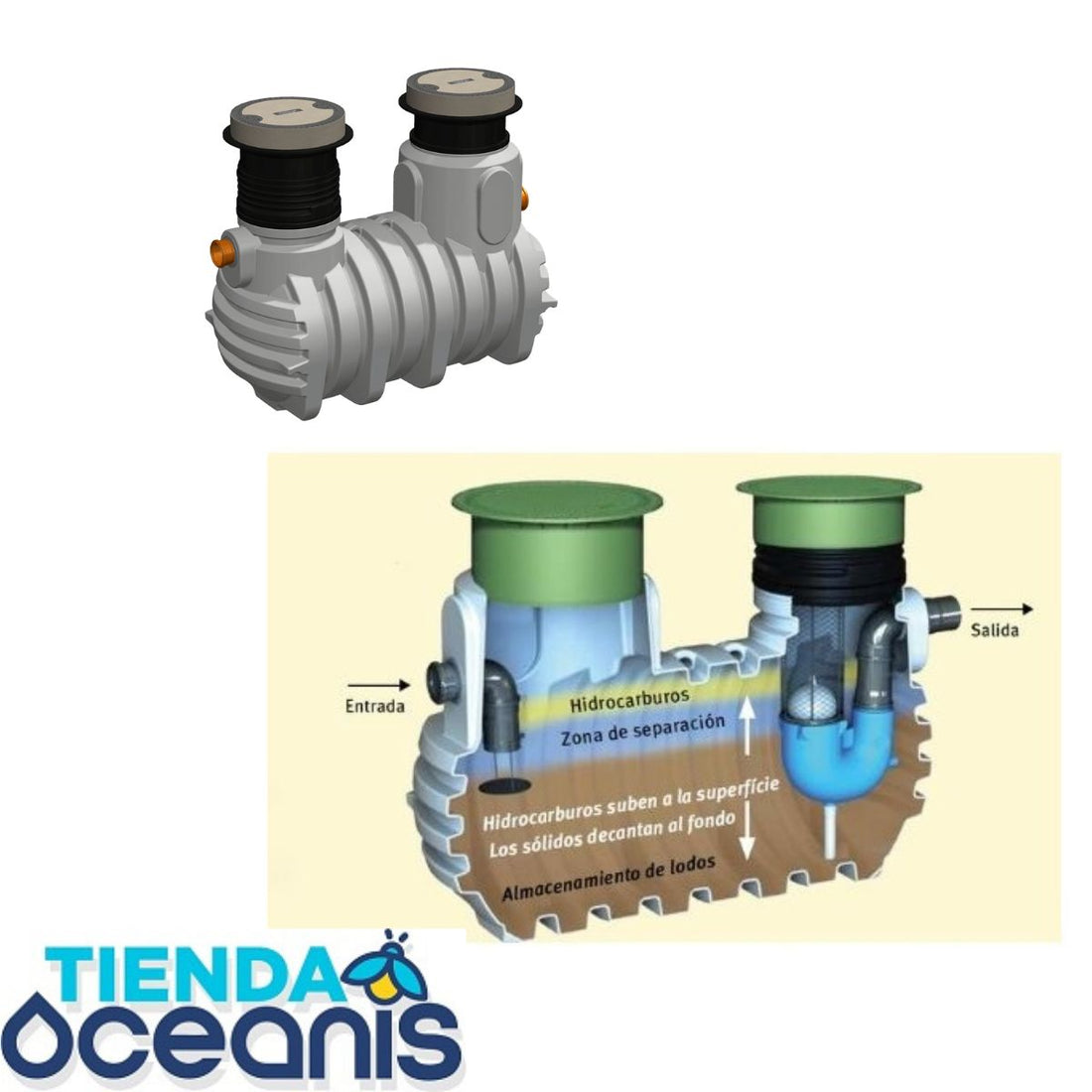Class I hydrocarbon separators are used to retain contaminating substances such as oils and hydrocarbons from the inside of a tank.
Designed and manufactured for efficient use, they comply with UNE EN 858-1 regulations and are approved.
Hydrocarbon separators are the necessary complement for the treatment of waste water and are designed to provide efficient solutions in car wash centres, car parks, workshops, petrol stations, vehicle fleets and warehouses for dangerous goods.
Hydrocarbon separators are devices used to separate hydrocarbons from water and are used in industry and in areas where there is a risk of groundwater contamination. Wastewater treatment plants, on the other hand, are wastewater treatment systems used to remove contaminants from wastewater before it is discharged into the environment.
In some cases, hydrocarbon separators can be used in conjunction with wastewater treatment plants to treat wastewater and remove hydrocarbons. However, not all wastewater treatment plants need a hydrocarbon separator, as this depends on the type of contaminants present in the wastewater.
Important note: Hydrocarbon separators are not equivalent to scrubbers and cannot replace them in removing other types of pollutants. Therefore, it is important to determine what type of wastewater treatment is necessary based on the type and amount of pollutants present in the wastewater.
Hydrocarbon separators are equipment used in industry to separate and remove hydrocarbons present in water and other liquids. These equipment are commonly used in wastewater treatment facilities in the oil industry, service stations and mechanical workshops, among others.
Hydrocarbon separators work by separating hydrocarbons and other contaminants from water through gravity and flotation. Water enters the separator and is stopped, allowing heavier contaminants, such as hydrocarbons, to settle to the bottom of the separator. The cleaner water rises and exits the separator.
There are several types of hydrocarbon separators available, including plate separators, coalescing separators, and gravity separators. The choice of separator type will depend on the specific application and contaminant removal requirements.
It is important to note that hydrocarbon separators must be properly operated and maintained to ensure optimal performance and prevent potential environmental and safety hazards.
